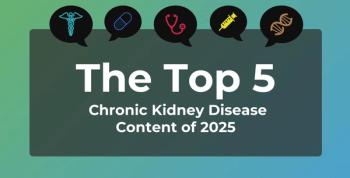
Dr Rajesh Rajpal Reviews Latest Innovations in Cataract Surgery
Rajesh Rajpal, MD, chief medical officer, global head of clinical medical affairs, Johnson & Johnson Vision, discusses the surgical options available to patients undergoing cataract surgery.
With a wide array of technological innovations in cataract surgery, patients can be matched via testing performed in-office with intraocular lenses that best meet their needs, said Raj Rajpal, MD, chief medical officer, global head of clinical medical affairs, Johnson & Johnson (J&J) Vision.
Transcript
How has technology in the care and surgical process of cataracts evolved?
So, we perform cataract surgery with incisions that are microscopic. Generally, patients don't need sutures during cataract surgery. There is the option for a laser component of cataract surgery that often also may add precision in certain patients. And then we implant an intraocular lens after taking out that natural dense cloudy lens, which is the cataract.
Those intraocular lenses have now advanced to the point where we have various options where we can help patients reduce their need for glasses after cataract surgery. So, for example, at J&J, we have the TECNIS family of intraocular lenses, which were introduced almost 20 years ago, and are a wide range of lenses, which allow patients to again minimize the need for glasses if they choose that type of lens. And I can talk about that a little bit in more detail as we describe kind of what's happening in surgery.
Can you speak further on the options available for cataract surgery?
The TECNIS family of lenses that I was describing, again, has just celebrated its 20th anniversary, so it's been 20 years since it was introduced, and it had a number of breakthroughs. It was the first aspheric lens, and it also had an extended depth of focus. Those are some of the advances within the TECNIS family of lenses.
We decide with patients when they're having cataract surgery, whether we're going to be implanting a monofocal lens, which is a single focus lens, and we just introduced the next generation of monofocal lens technology called Eyehance, which is part of the TECNIS family, earlier this year.
So, the TECNIS Eyehance lens was designed to be able to provide patients their best outcomes when they're focusing on their single level of vision—most commonly distance vision. We've also introduced this year, the TECNIS Synergy lens.
This is a combination, extended depth of focus and multifocal lens that provides a continuous range of vision. And that's for patients who want to be able to use their smartphones, do something at intermediate range, such as what we're doing on a computer screen, and then also still have a distance range of vision.
So, those patients who want to minimize their glasses after cataract surgery would select a TECNIS Synergy type of lens. So, as we've evolved into these and developed these newer technologies, we can give patients better options in how they can perform visually after cataract surgery.
So, we do the testing that helps us determine in our offices what options the patient has, and then we can help suggest to patients whether they will function best with one particular type of lens, and that's part of the benefit of the TECNIS family of lenses—we have that entire range of options that we can offer.
All of these lenses also can function to correct astigmatism. Astigmatism is where the curvature of the cornea is not the same in both sides or in all areas. So, therefore we want to reduce the need for glasses by using what's called a toric lens. That's an additional advance that's part of this TECNIS family of lenses.
Newsletter
Stay ahead of policy, cost, and value—subscribe to AJMC for expert insights at the intersection of clinical care and health economics.









































